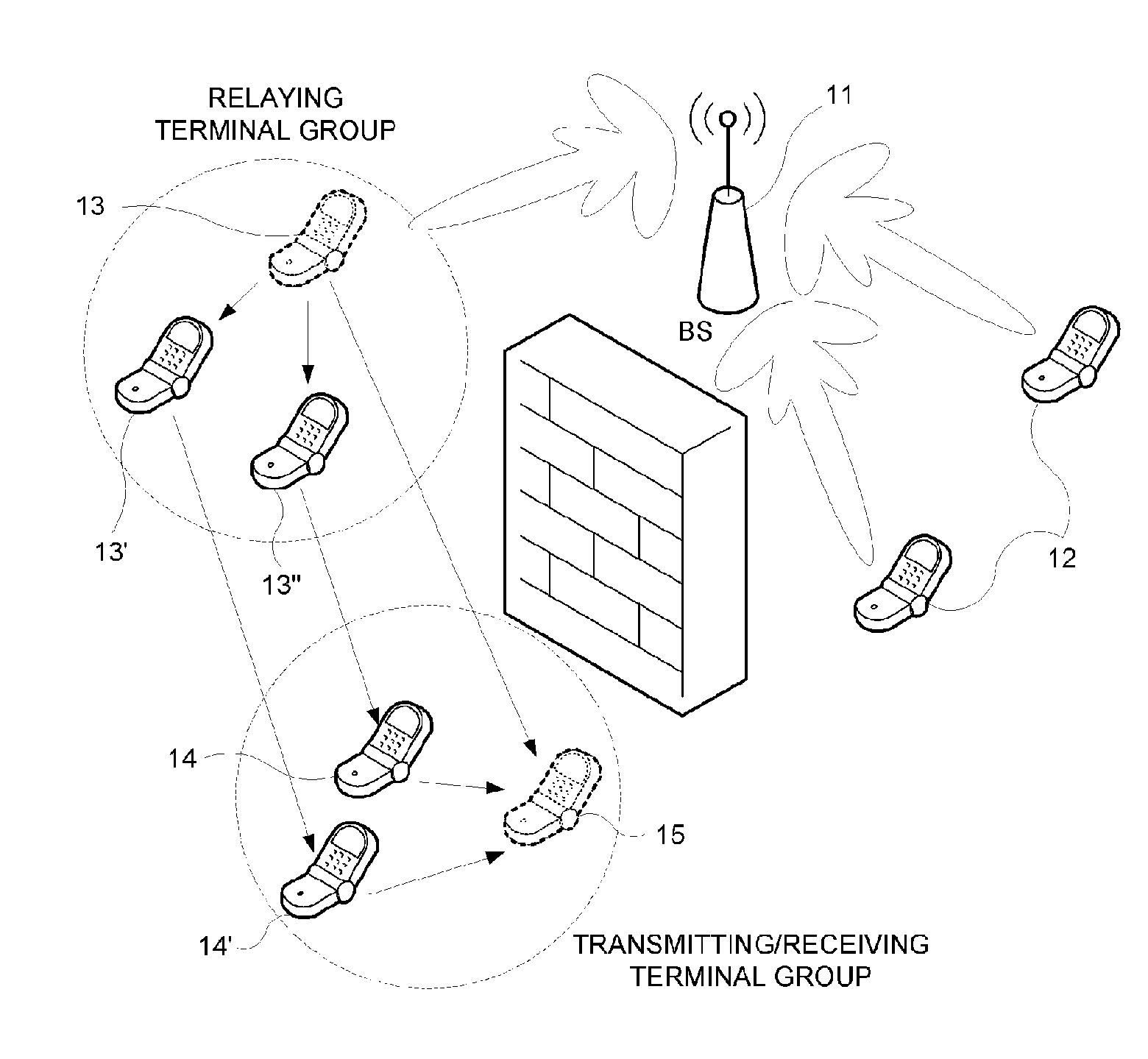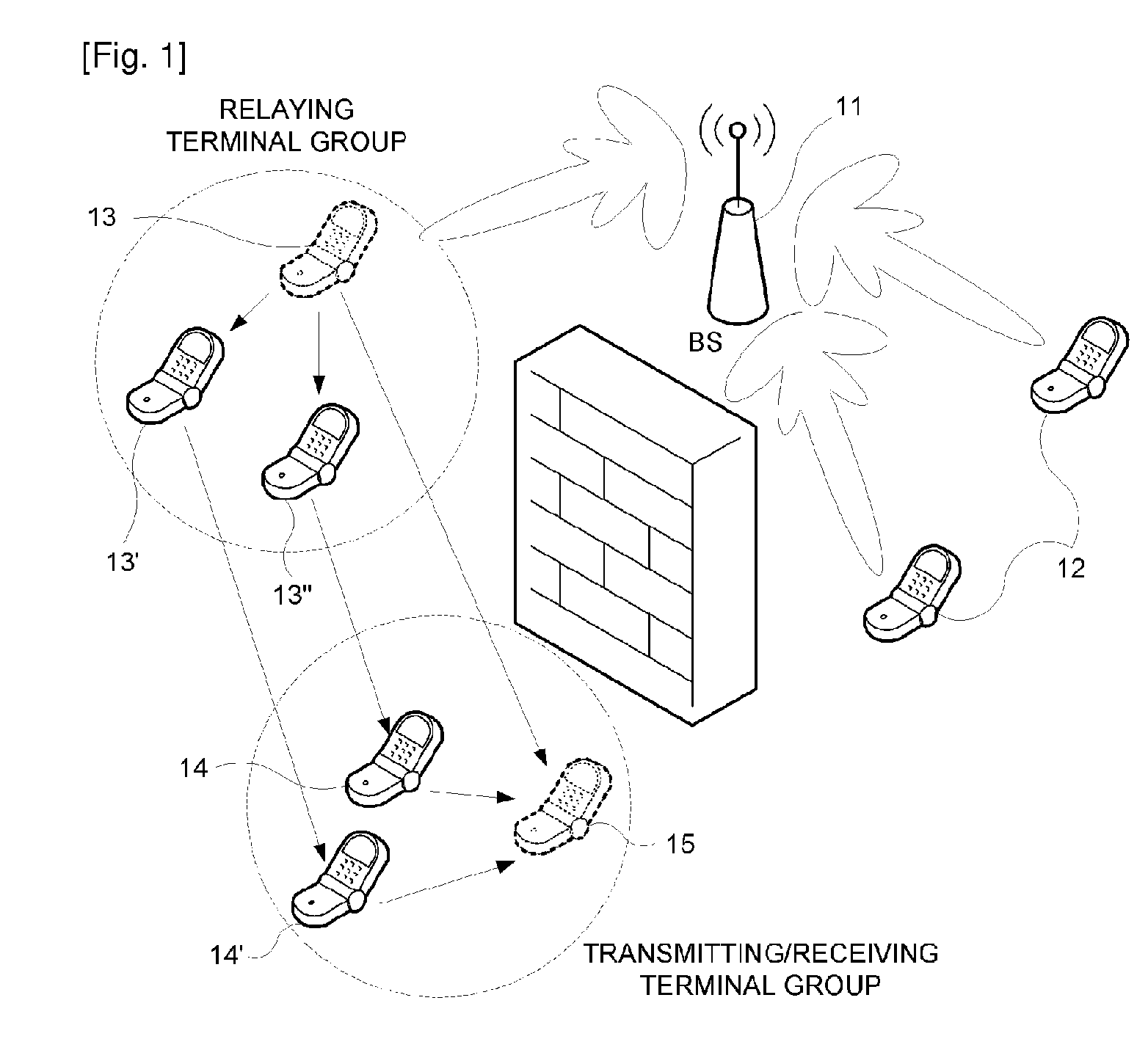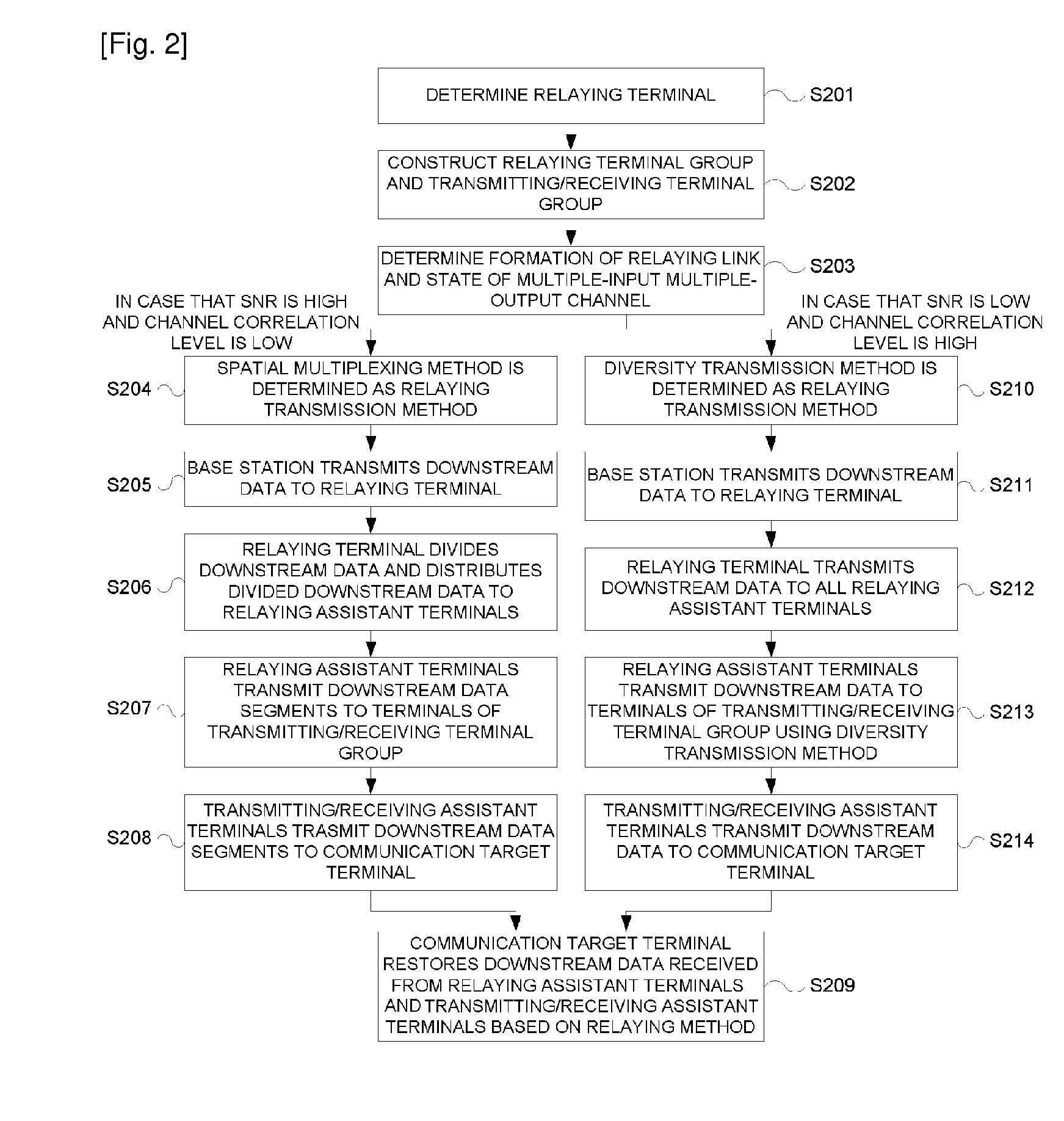Relay Communication Method of Next Generation Cellular Communication System
- Summary
- Abstract
- Description
- Claims
- Application Information
AI Technical Summary
Benefits of technology
Problems solved by technology
Method used
Image
Examples
Embodiment Construction
[0016]It is assumed that the next generation cellular communication system, to which the present invention is applied, uses a high frequency band of several tens of GHz. Although the next generation cellular communication system can use a 2 GHz or lower band, similar to that used at present, this may be ineffective in view of propagation characteristics, the size of the antenna, and the antenna separation distance which are formed by a wavelength of carrier wave. The present invention enables a signal to be transmitted or received to or from a terminal, which acquires a LOS channel, by utilizing a beamforming method using the antenna array of a base station. Here, the terminal may have one or more antennas.
[0017]In the present invention, a LOS channel terminal is a terminal which acquires a LOS channel with a base station, and a non-LOS channel terminal is a terminal which does not acquired a LOS channel with a base station. Further, a LOS channel terminal group is a group of the LO...
PUM
 Login to View More
Login to View More Abstract
Description
Claims
Application Information
 Login to View More
Login to View More - R&D
- Intellectual Property
- Life Sciences
- Materials
- Tech Scout
- Unparalleled Data Quality
- Higher Quality Content
- 60% Fewer Hallucinations
Browse by: Latest US Patents, China's latest patents, Technical Efficacy Thesaurus, Application Domain, Technology Topic, Popular Technical Reports.
© 2025 PatSnap. All rights reserved.Legal|Privacy policy|Modern Slavery Act Transparency Statement|Sitemap|About US| Contact US: help@patsnap.com



